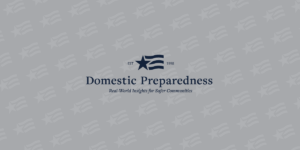

Technological Strategies for Organizational Leadership
Nathan DiPillo
February 22, 2023
Article Out Loud Integrating information technology (IT) into emergency management and public safety agencies involves balancing technological limitations with the organizational mindset. Finding this balance has been discussed in practice,

Threat Awareness – Actions Now Mitigate Disasters Later
Catherine L. Feinman
February 22, 2023
Reducing or eliminating the long-term risks associated with natural, human-caused, or technological disasters begins with an awareness that specific threats exist. For example, a Chinese spy balloon crossed the

Protests: Balancing First Amendment Rights and Public Safety
Matthew Loeslie
February 22, 2023
In today’s society, peaceful protests can occasionally escalate into unlawful rioting. The behavior of those involved in a demonstration or public gathering can vary greatly. This behavior includes: Peaceful protests, actions,

Linking Resilience and Innovation for Emergency Preparedness
Nia D'Emilio and Christopher Tarantino
February 15, 2023
Most industries suggest a certain level of resilience and innovation. It is important to get through challenging times to keep a company going, and “innovate or die” has long been

Trends in Political Violence and Mass Demonstrations
Richard Schoeberl
February 15, 2023
Article Out Loud More than 400 worldwide antigovernment protests have taken place since 2017. According to the Global Peace Index (GPI), the incidents of civil unrest have doubled across the globe over

Building Business Post-Disaster – A Florida Case Study
Mark McQueen
February 8, 2023
Opportunities can be found in the wake of great devastation. However, it can be challenging to plan for the future while restoring critical services and repairing the damage left in the crisis’s wake. Recovery plans should look beyond what existed before the disaster and include laying a foundation for regrowth and new business.

PACEing a Communications Resilience Plan
Charles J. Guddemi
February 8, 2023
Most organizations have a daily operational plan for their communications that works most of the time and a backup plan for a short-term problem. However, many do not have a primary, alternate, contingency, emergency (PACE) plan for critical operational tasks. Learn more about the benefits of creating and maintaining a PACE plan.

Threat Assessment and Management: Practices Across the World
Carl Amritt, Eliot Bradshaw and Alyssa Schulenberg
February 1, 2023
The ever-evolving threat of terrorism continues to impact cities around the world. The Global Terrorism Index shows that in 2021, the number of attacks increased from the previous year by 17 percent

Winter Storm – Reimagining Recovery Using Support Functions
Jamie Hannan and Stephanie Wright
February 1, 2023
Out of first-time events come many important lessons learned. For example, information must be disseminated using familiar terminology when an unfamiliar event occurs. In addition, recovery is a team effort that begins before the event has ended. Learn how the third most populated county in the United States handled recovery after Winter Storm Uri in 2021.

